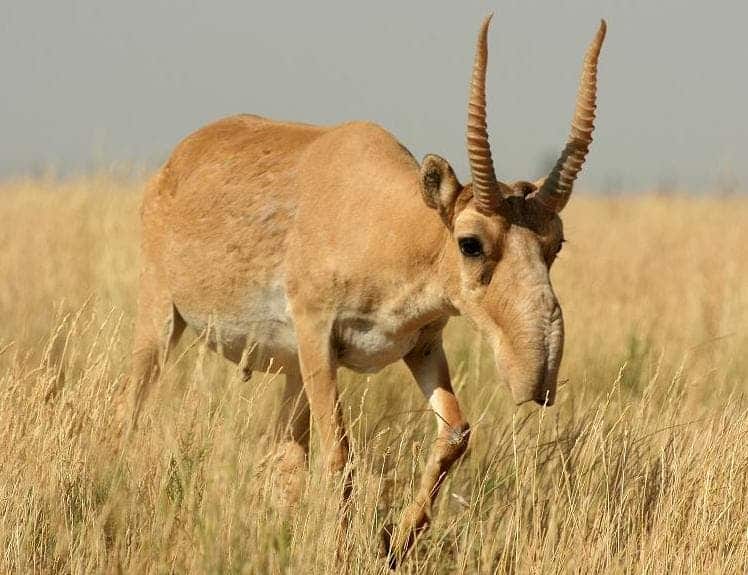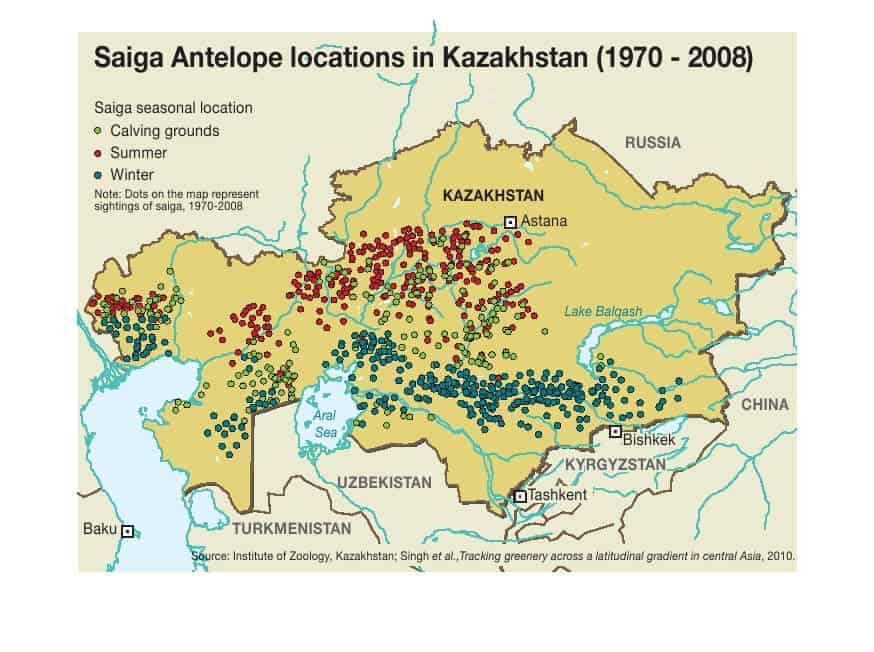In May 2015, we covered a mysterious occurrence involving 200,000 critically endangered saiga antelopes (Saiga tatarica) dropping dead over only a few weeks time. Now we have answers to why this sad event occurred. As was suspected at the time, the bacterial infection pasteurellosis was the culprit. However, it turns out that a series of individually harmless events were responsible for the demise of so many saiga antelopes.

Saiga antelopes now live only in Kazakhstan, Russia, and Mongolia. They used to occupy most of the Eurasian steppe. Now, the vast majority of the population resides in Kazakhstan. They were hunted and their habitat shrunk in the meantime. Due to these reasons, they have been listed as critically endangered since 2002. Other mass deaths have also plagued the herds: in May 1998, 270,000 saiga antelopes died similarly and in May 2010, 12,000 of the antelopes from a 26,000 animal herd died. A Russian scientific paper on the topic stated that there have also been mass die-offs in 1955, 1956, 1958, 1967, 1969, 1974, and 1981.The bacteria responsible, Pasteurella multocida, usually lives harmlessly on the saiga antelopes. However, the tides began to shift as the climate became unusually warm and humid in the spring of 2015. The bacteria then invaded the antelopes’ bloodstream. Coincidentally, May is also when the saiga antelope have their young. The saiga antelopes’ survival strategy is to have a high productive rate, so they produce triplets with the highest fetal biomass of any mammal. The mothers are therefore weak right after childbirth and the newborns are vulnerable. This could be the reason that most of the mass die-offs have occurred in May. In the end, the antelopes died of blood poisoning caused by the bacteria. Over 60% of their total global population was lost at this time.
The bacteria responsible, Pasteurella multocida, usually lives harmlessly on the saiga antelopes. However, the tides began to shift as the climate became unusually warm and humid in the spring of 2015. The bacteria then invaded the antelopes’ bloodstream. Coincidentally, May is also when the saiga antelope have their young. The saiga antelopes’ survival strategy is to have a high productive rate, so they produce triplets with the highest fetal biomass of any mammal. The mothers are therefore weak right after childbirth and the newborns are vulnerable. This could be the reason that most of the mass die-offs have occurred in May. In the end, the antelopes died of blood poisoning caused by the bacteria. Over 60% of their total global population was lost at this time.
“With all these threats, it is possible that another mass die-off from disease could reduce numbers to a level where recovery is no longer possible,” said researchers at the Royal Veterinary College in London.
It is not quite known how the temperature and humidity causes the bacteria to turn malevolent. However, hotter temperatures from climate change could aggravate the situation and perhaps trigger more mass deaths of this endangered species. Unfortunately, there is no easy solution to prevent these deaths, short of inoculating the whole herd on the remote steppes of Kazakhstan, which is not realistic. The most important thing to do is to ensure that the saiga population is large enough to withstand these tragedies.
Journal reference: Kock, R.A. et al. 2018. Saigas on the brink: Multidisciplinary analysis of the factors influencing mass mortality events. Science Advances.







